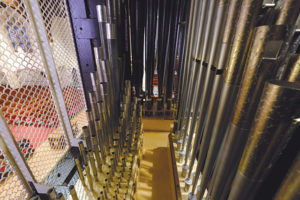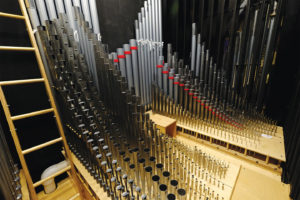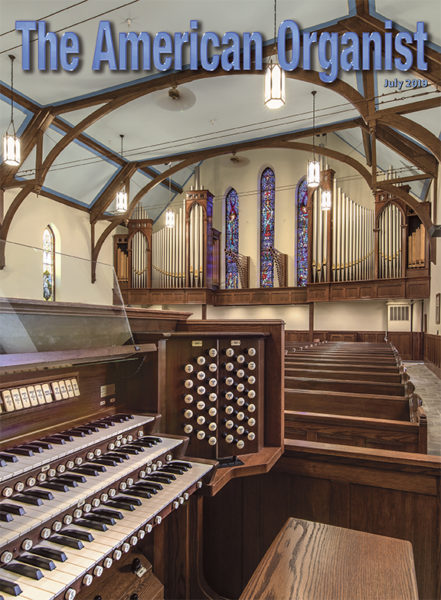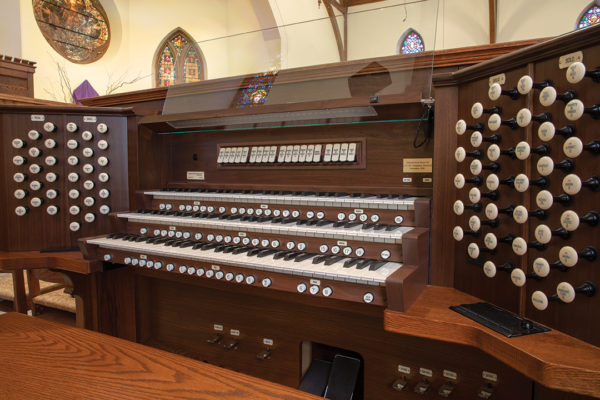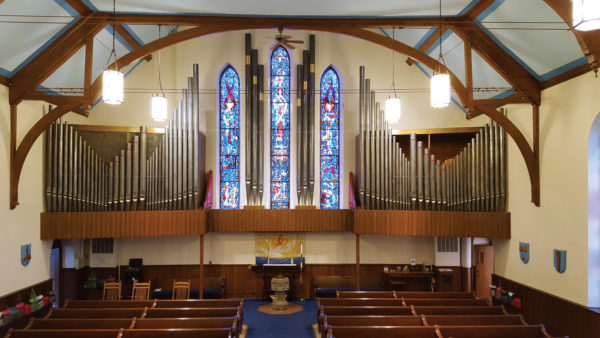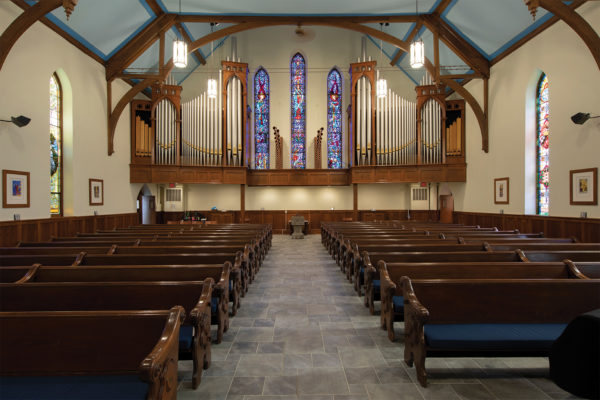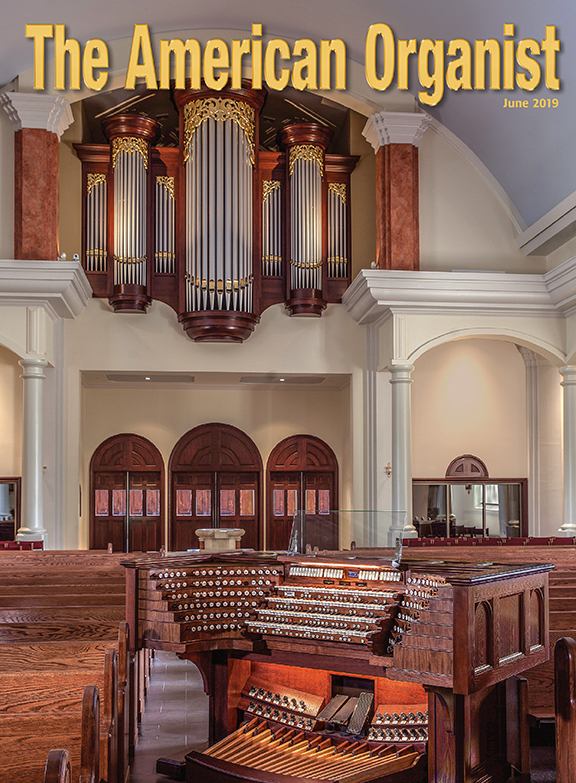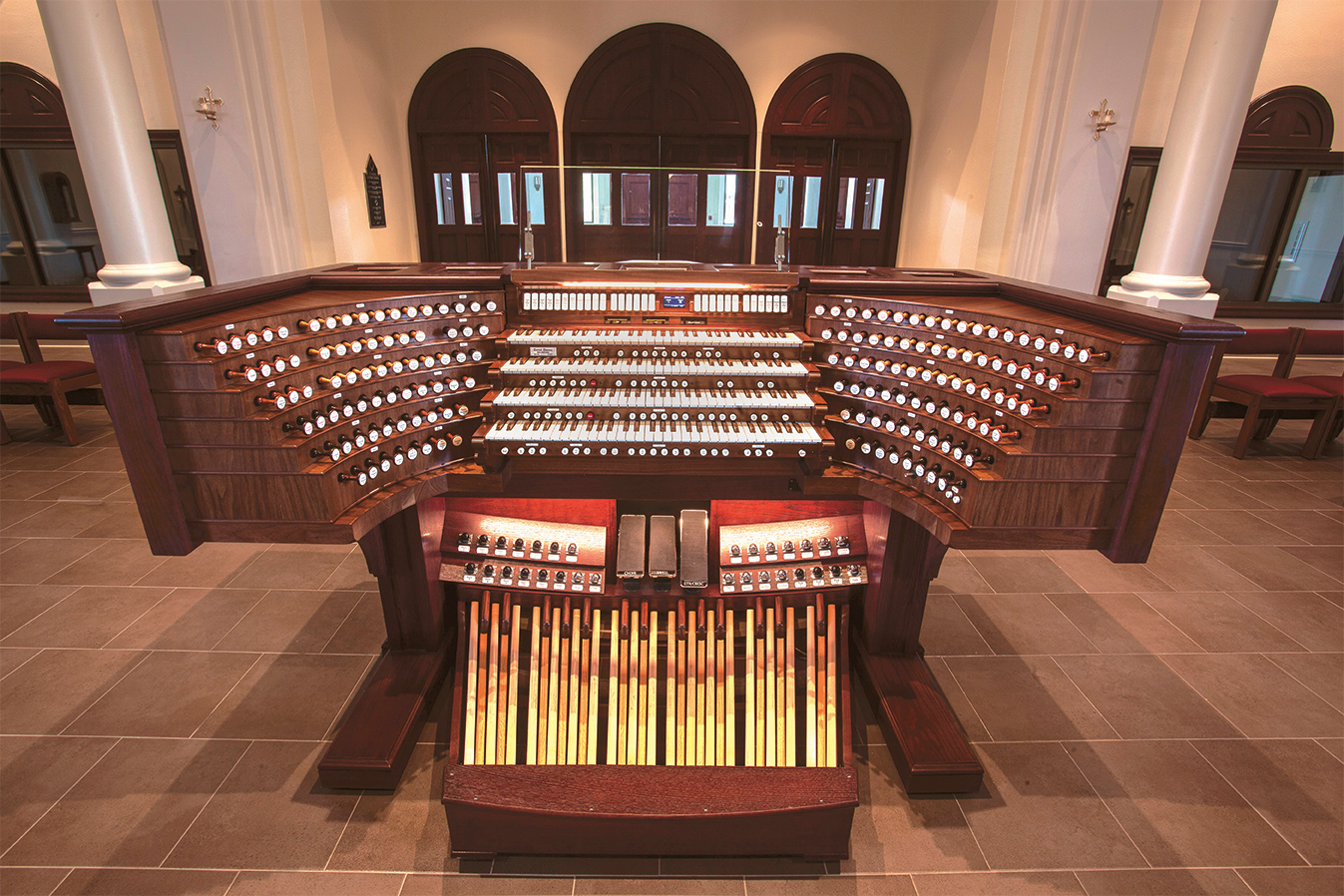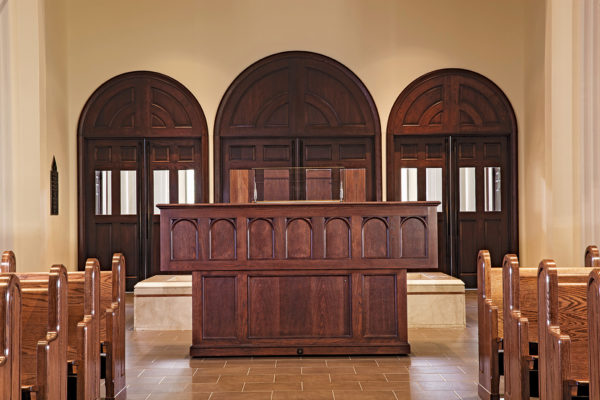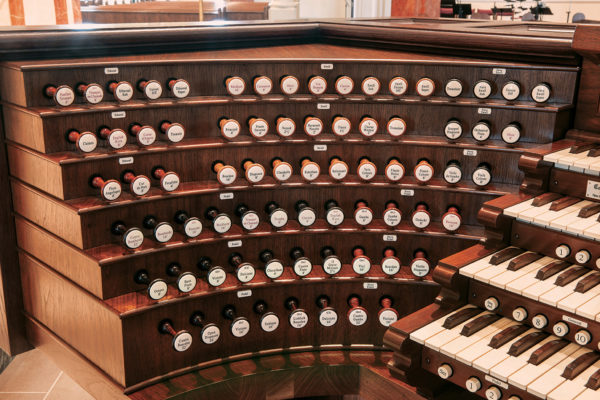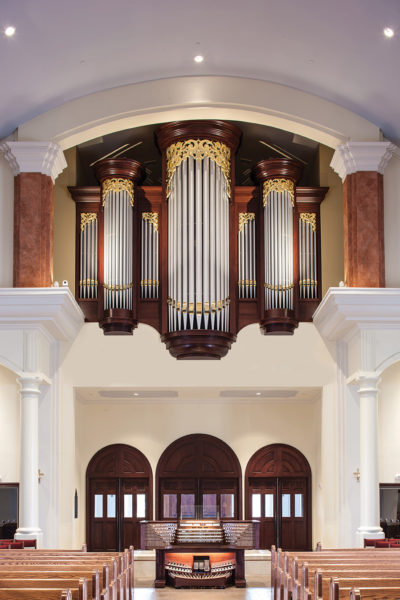Riverside Presbyterian Church
Jacksonville, Florida
R.A. Colby OrganBuilders
Johnson City, Tennessee
by Braden R. Colby
View the Stop List
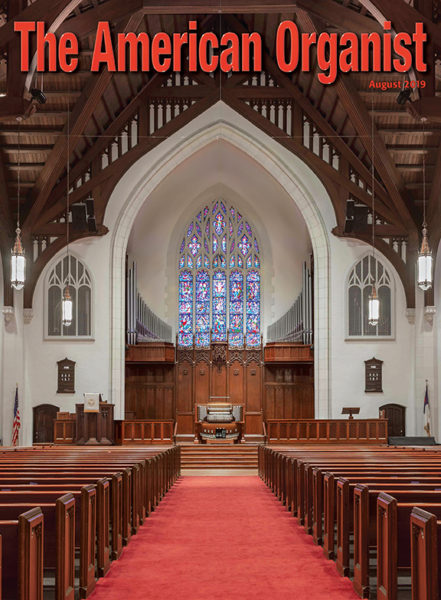
As a company, we often find that the most fascinating part of our journey is the evolution of our projects. Rarely does the final instrument match the initial idea. Instead, the final product comes from a powerful mixture of our clients’ needs and desires, the organ’s environment, and our own expertise. Every project begins and ends with listening. From the first point of contact, we listen so that we can understand the needs, wants, and vision of the church. We also listen to the musicians and consultant about how other instruments have performed and how they would like the new one to differ. Finally, we listen to understand the room and how the instrument will live in the space. My grandfather, Robert Colby, always used to say, “The most important stop in the organ is the room.” He was referring not only to the acoustics of the space but also, and more importantly, to what the room means to the people and their worship of God. Holding these elements in mind, everything else falls into place with much greater clarity, and a vision for the organ begins to take shape. The journey between meetings, drawing revisions, specification changes, and acoustical improvements twists and curves along a path that brings us to a destination more magnificent than any of us could have achieved independently.
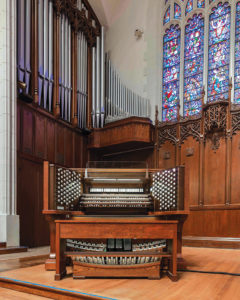
We were fortunate to work with a dedicated group of musicians and music lovers at Riverside Presbyterian Church in Jacksonville, Florida. The church has a very long history with organ music, dating back to the original installation of a Möller pipe organ in 1927. Over the years, this instrument endured a series of rebuilds and updates, but fundamental flaws in the acoustics and serviceability were never addressed. We worked with the consultant and committee to resolve several areas simultaneously, including the serviceability of the instrument, stability of tuning, egress of sound, scope of the tonal resources, and comfort of the console. In everything we do, R.A. Colby holds three principles at the forefront of the decision-making process: stewardship, tonal quality, and the ability to properly service the instrument. When balancing these principles, answers often reveal themselves.
In order to best envelop the Riverside congregation with the presence of the organ, we took two dramatic steps. First, we mounted the critical tonal components of the Great division on the chancel wall in order for the sound to blend with the choir before projecting down the main axis of the building. Second, we opened the chamber space to allow the sound to bloom within the room.
R.A. Colby takes the responsibility of stewardship very seriously and seeks the best value for the church’s investment. The goal was to have a complete pipe instrument that would stand on its own. We retained several stops from the previous instrument and incorporated new pipework to round out the specification. We then used digital augmentation to fill out the specification, broadening the available tonal palette.
Finally, to increase stability and minimize the cost of long-term maintenance, we placed all manual pipework on a single level, which reduces the impact of differential thermal changes. A fully floored lower mechanical level isolates winding and action noise from the tonal level. Expressed divisions take advantage of shades, on both the chancel and nave sides, and extend from the rackboards to the ceiling.
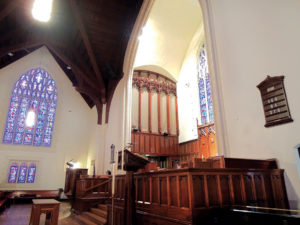
All of these individual decisions combine to create an instrument worthy of use in worship and reflective of the artisans and dedicated individuals whose gifts of time, talent, and money made it a reality. As when the project began, it ended with listening to the congregation—now worshiping with newfound purpose.
Brad Colby is a third-generation organbuilder and vice president of R.A. Colby Inc. He earned an MBA degree from Duke University and is an active member in the American Institute of Organbuilders and the AGO. Website: Racolby.com
From the Consultant
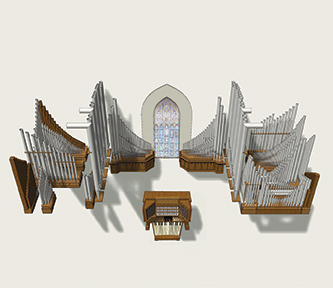
I’ve been fortunate in having three careers in my life: elementary music and classroom teacher, church organist-choirmaster, and organ consultant. The consulting has only taken place in the last 20 years, but it is something that I’ve had a passion for, ever since my days in college. When I was called to be the consultant for Riverside Presbyterian in February 2014, I don’t think any of us had any idea that we were embarking on a journey that would last four and a half years. After reviewing the existing instrument, it was plain to see that much of the pipework was in good condition and had good tonal qualities. However, the engineering was atrocious. In some places the mechanisms were so crammed together that access for maintenance was impossible.
The R.A. Colby Company was selected because they put forth the most creative ideas about the design of the organ and were insistent from the beginning that the walls facing the seating of the sanctuary should be opened as much as possible to allow tonal egress of the sound of the pipes in the chambers. Colby was also agreeable to the use of some digital stops in the organ. Space in the organ chambers was very limited, and we knew that we did not want to crowd the organ and/or stack one division of pipes above another as had been done in the old instrument, contributing to pipework not staying in tune.
Early on in the development of plans for the organ, church representatives and I worked with R.A. Colby to begin to develop the specification of the organ. This is a process where ideas are put forth and thoroughly discussed. Stops to be included in the scheme are influenced by available space, cost, and their role in rendering the literature to be played on them.
It has been my pleasure to work with Riverside Presbyterian Church, and the Colby staff, who have produced a magnificent organ to serve the church for decades to come.
John R. Parkyn
From the Organist
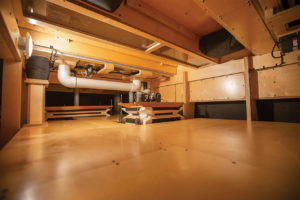
“Soli Deo Gloria”—to the glory of God alone. This phrase, used by Johann Sebastian Bach and George Frideric Handel, expresses the idea that music is solely for the sake of praising God. So it is with our new Colby organ. The immense sound tapestry of this instrument will lead us as we gather together to worship our Creator. The organ will support us as we sing together as a faith family expressing our joy, our sadness, our pleas, and our questions. As we grieve and celebrate together, the colors and sounds of the choir and organ will guide us to deeper understandings of the texts we sing and hear. The colorful timbres of the instrument will be present in the beautiful Riverside Presbyterian Church sanctuary to garnish melodies, harmonies, and counterpoint as we meditate with gratitude on the wonders of our Creator, Sustainer, and Companion on our way.
Pope Benedict XVI, at the blessing of the new organ at the Basilica Alte Kapelle in Regensburg, Germany (September 13, 2006), expressed the power of the organ best: “The organ has always been considered, and rightly so, the king of instruments because it takes up all the sounds of creation . . . and gives resonance to the fullness of human sentiments, from joy to sadness, from praise to lamentation. By transcending the merely human sphere, as all music of quality does, it invokes the divine. The organ’s great range of timbre, from piano through to thundering fortissimo, makes it an instrument superior to all others. It is capable of echoing and expressing all the experiences of human life. The manifold possibilities of the organ in some way remind us of the immensity and magnificence of God.”
Lois Gurney
